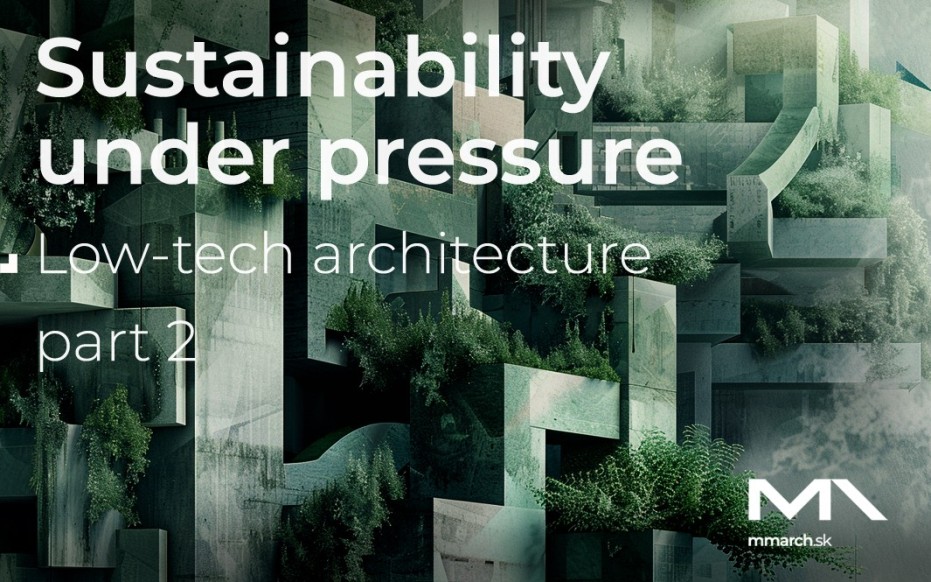
How to Approach Sustainable Construction, Why Responsible Design Matters, and the Impact Low-Tech Principles Can Have on Our Future. In this article series, we explore how we can transform our environment for the better.
Introduction
We are surrounded by the word sustainability. Sustainable construction, agriculture, travel, clothing, cosmetics — everything seems to come with a sustainable label. When I open a magazine about architecture, the first thing I notice is a new sustainable technology or construction component. Whatever it is, it’s usually described as sustainable. It’s great that people are searching for innovations to protect the planet. But sometimes, I get the feeling that sustainability has become more of a quality label you can buy — and once you've bought it, you’re off the hook when it comes to caring about the environment. Does that feel confusing to you? It does to me. Isn’t this overwhelming demand for sustainability coming at us in a rather unsustainable way?
What Is Sustainability?
In 2025, Earth Overshoot Day will fall on July 24. This marks the date when humanity will have used up all the natural resources the planet can regenerate in a year. Yes, you read that correctly — from July 25 onwards, we’re living on ecological credit. And the debt is growing year after year. This brings us to the core of what sustainability actually means: it’s about reducing our demand for resources and energy by changing habits, developing new solutions, and integrating them into daily life.
The construction sector is one of the world’s largest energy consumers. Around 30–40% of global energy use goes into the construction and operation of buildings. This includes everything across a building’s life cycle: material production, construction, operation, and finally demolition. Energy use covers not only heating, cooling, lighting, and other technical systems, but also the transportation of materials.
In this context, sustainable building means reducing the demand for resources and energy throughout the building’s entire life cycle — from construction to use to deconstruction. And we can’t ignore fossil fuels: even in the EU, 60% of building-sector energy still comes from non-renewable sources. As architects, we have a responsibility to contribute creatively to sustainable solutions and inspire people to adopt them.
Trends in Sustainable Architecture
Some of the most prominent trends in sustainable architecture include:
a focus on energy efficiency and renewable energy sources — like solar panels, photovoltaic systems, and heat pumps — all aimed at reducing a building’s energy demand
material choices are increasingly local, recyclable, and natural, with a strong emphasis on ecological materials such as wood and natural insulation
green roofs and vertical gardens help reduce urban heat stress, improve air quality, and support biodiversity
rainwater harvesting and permeable surfaces support better water management and reduce runoff
smart technologies help optimize energy consumption within buildings
a more recent trend is the circular economy approach, which promotes reuse, renovation, and material recovery
If we imagine sustainability as a grading scale from 1 to 10, implementing these trends moves us closer to a top score. The more sustainable strategies we apply, the better the outcome. Sounds simple — but in reality, it’s an adventure full of challenges: economic constraints, technical limitations, and the need for collaboration across communities, municipalities, and even entire regions.
Are These Trends Enough?
There’s no doubt we’ve made significant progress. Regulations have become stricter, insulation and material quality requirements have increased, and technologies with lower environmental impact are becoming mainstream. All of this is now embedded in building codes and standards. But despite this progress, we must ask: Is it enough? Are we truly witnessing sustainable construction, or are we just optimizing and softening an inherently unsustainable way of living?
Has sustainability lost its original meaning? Has it partly become a marketing language? In the next part of this series, we’ll explore the rebound effect — a phenomenon where well-intentioned innovations end up producing unintended consequences. We’ll also take a deeper dive into low-tech principles. Stay with us.

